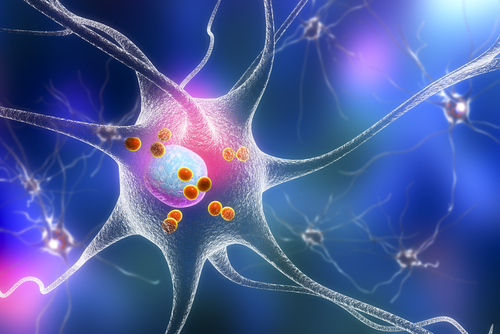Voyager’s Gene Therapy Improves Parkinson’s Patients’ Movement Over Long Term, Trial Shows

A single administration of Voyager Therapeutics gene therapy improves advanced Parkinson’s patients’ movement up to three years later, a Phase 1b trial indicates.
Voyager designed VY-AADC01 to deliver the aromatic L-amino acid decarboxylase (AADC) gene to a specific brain region, the putamen. The gene provides instructions for the production of the AADC enzyme. The enzyme is responsible for converting the treatment levodopa into dopamine, the signaling molecule that is missing in Parkinson’s patients.
In advanced Parkinson’s disease, AADC expression is lowered. Another feature of this stage of the disease is the death of nerve cells that produce dopamine in the substantia nigra — a midbrain region. The neuron deaths prevent the substantia nigra from being able to convert oral levodopa to dopamine.
Voyager’s gene therapy is aimed at increasing dopamine production in the putamen, bypassing the effects of the dying dopamine neurons. The goal is for the treatment to improve motor function while reducing the requirement for levodopa or other dopaminergic medications.
VY-AADC01 is being evaluated in both the Phase 1b (NCT01973543) trial and a Phase 1 study (NCT03065192) in patients with advanced Parkinson’s.
Previous data had shown that a single treatment triggers a dose-dependent and time-dependent response across multiple measures of motor function. It also increased AADC enzyme activity and enhanced levodopa’s response.
The Phase 1b trial data that Voyager just announced showed that the therapy continues to yield robust and durable improvements in patients’ motor function from a year to three years later. It also allowed patients to make substantial reductions in their use of daily oral levodopa and other Parkinson’s medications.
The trial includes 15 patients with advanced Parkinson’s disease who have disabling motor fluctuations despite treatment with optimal anti-Parkinson’s medications. Patients are 58 years of age on average and have had a Parkinson’s diagnosis for 10 years.
Key trial objectives are to assess the efficacy of three increasing doses of VY-AADC01 given in a single administration, and to see if the treatment is safe and tolerable.
Among the three groups of patients, those who received the second-highest dose have achieved the best results. They experienced the highest improvement in daily levodopa on-time without any impairment of voluntary movement.
During the trial, patients were instructed to reduce their daily doses of oral levodopa and related medications called levodopa equivalent doses — to achieve optimal motor control after treatment with VY-AADC01.
All three patient groups were able to reduce their intake of levodopa equivalent doses within six months of treatment. The mean decrease was 15% for the lowest gene therapy dose, 33% for the middle one, and 42% for the highest one.
“Given the improvements in motor function and wider spectrum to titrate oral levodopa with our Cohort 2 dose, we are excited to consider this as our likely dose in the pivotal program while still planning to review the six-month results from the Phase 1 posterior trajectory trial next quarter,” Bernard Ravina, the chief medical officer of Voyager Therapeutics, said in a news release.
VY-AADC01 also generated durable improvements in other measurements of motor function, including reductions in daily on-time with troublesome dyskinesia, or involuntary muscle movements.
In patient group 1, the improvement in on-time without troublesome dyskinesia was 2.1 hours at three years after treatment. In group 2 it was 3.5 hours at 18 months. And in group 3 it was 1.5 hours at 12 months.
Quality of life also improved in a dose-dependent manner, measured by patients’ scores on the Unified Parkinson’s Disease Rating Scale (UPDRS) and on the 39-item Parkinson’s Disease Questionnaire (PDQ-39).
Infusions of VY-AADC01 were well-tolerated in all patients, with no serious adverse events, supporting previous safety findings.
“We continue to be pleased with the duration and magnitude of effect of VY-AADC on multiple measures of patients’ motor function and quality of life, which is consistent with the mechanism of action of VY-AADC suggesting a greater capacity for patients to make more dopamine and improve their motor function with less need for oral levodopa,” Ravina said.
Voyager expects to use data from the Phase 1 and Phase 1b trials to design a Phase 2-3 pivotal trial program, which is expected to start mid-2018.
“We look forward to reviewing these results from the Phase 1b with the FDA,” Ravina said. “And we continue to expect to dose the first patient in the pivotal Phase 2-3 program in mid-2018.”






